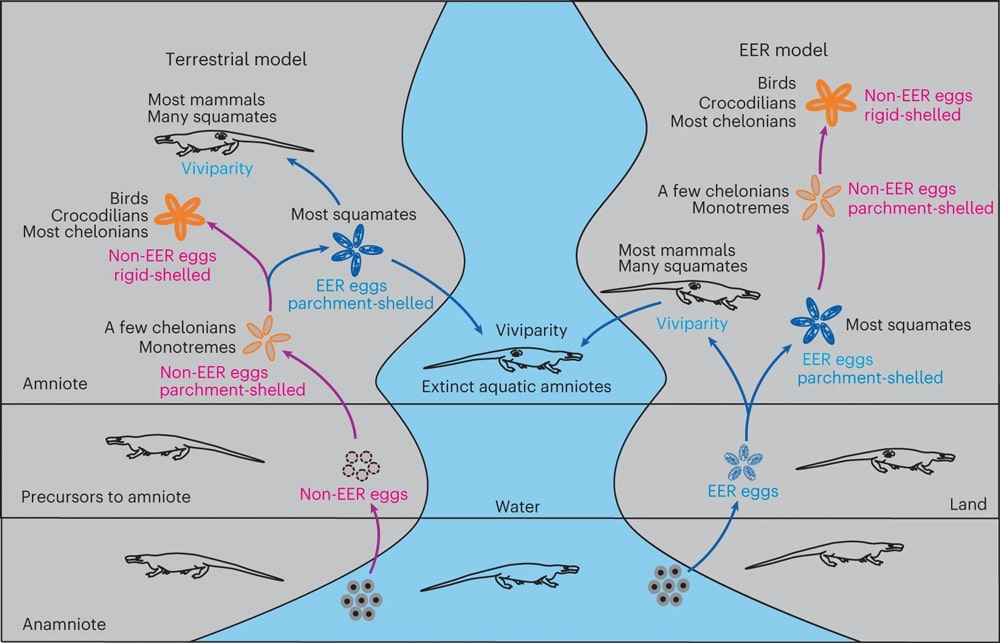Previous thought was hard shelled eggs were the key to the success of vertebrates that develop within the protective membrane inside the egg
Researchers with the University of Bristol and Nanjing University have just published a paper stating that reptiles may have borne live young before that of eggs. Previous thought was hard shelled eggs were the key to the success of vertebrates that develop within the protective membrane inside the egg, which is called the amnion. The researchers in their paper, “Extended embryo retention and viviparity in the first amniotes” show the evolutionary branches of Amniota, which includes lizards and their relatives as well as dinosaurs, crocodiles and birds, had extended embryo retention in their ancestors.

In the terrestrial model (left), non-EER oviparity (purple) was the primitive condition; oviparity with EER and viviparity (blue) evolved multiple times in amniotes. In the EER model (right), the evolutionarily labile reproductive mode of EER across oviparity to viviparity (blue) was primitive, while non-EER oviparity (purple) evolved multiple times in amniotes. Jiang, B., He, Y., Elsler, A. et al. Extended embryo retention and viviparity in the first amniotes. Nat Ecol Evol 7, 1131–1140 (2023). https://doi.org/10.1038/s41559-023-02074-0
“Before the amniotes, the first tetrapods to evolve limbs from fishy fins were broadly amphibious in habits. They had to live in or near water to feed and breed, as in modern amphibians such as frogs and salamanders, University of Bristol Prof. Michael Benton from the School of Earth Sciences said in a statement. “When the amniotes came on the scene 320 million years ago, they were able to break away from the water by evolving waterproof skin and other ways to control water loss. But the amniotic egg was the key. It was said to be a ‘private pond’ in which the developing reptile was protected from drying out in the warm climates and enabled the Amniota to move away from the waterside and dominate terrestrial ecosystems.”
Three-toed Skink Gives Birth To Live Young And Lays Eggs
The research centers around an oviparous extinct order of semiaquatic reptiles called choristoderes from the Lower Cretaceous period of Northeast China. These basal archosauromorphs were initially thought to be viviparous, or live bearers, but the researchers show that these reptiles were oviparous.
“This standard view has been challenged. Biologists had noticed many lizards and snakes display flexible reproductive strategy across oviparity and viviparity,” Prof. Baoyu Jiang of Nanjing University said. “Sometimes, closely related species show both behaviours, and it turns out that live-bearing lizards can flip back to laying eggs much more easily than had been assumed.”
It is an interesting study coming on the revelation in 2020 that a three-toed skink (Saiphos equalis), which was thought to be a live bearing reptile, was observed laying three eggs in 2019 and then several weeks later gave birth to a live baby lizard. The skink is what is called bimodally reproductive in that it can lay eggs and live birth baby lizards.
The complete paper, Extended embryo retention and viviparity in the first amniotes” can be read on the Nature Ecology & Evolution website.


